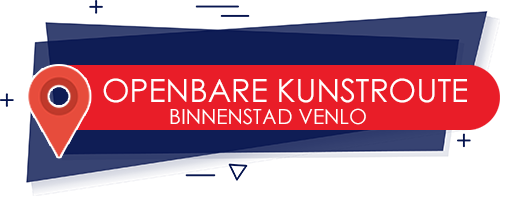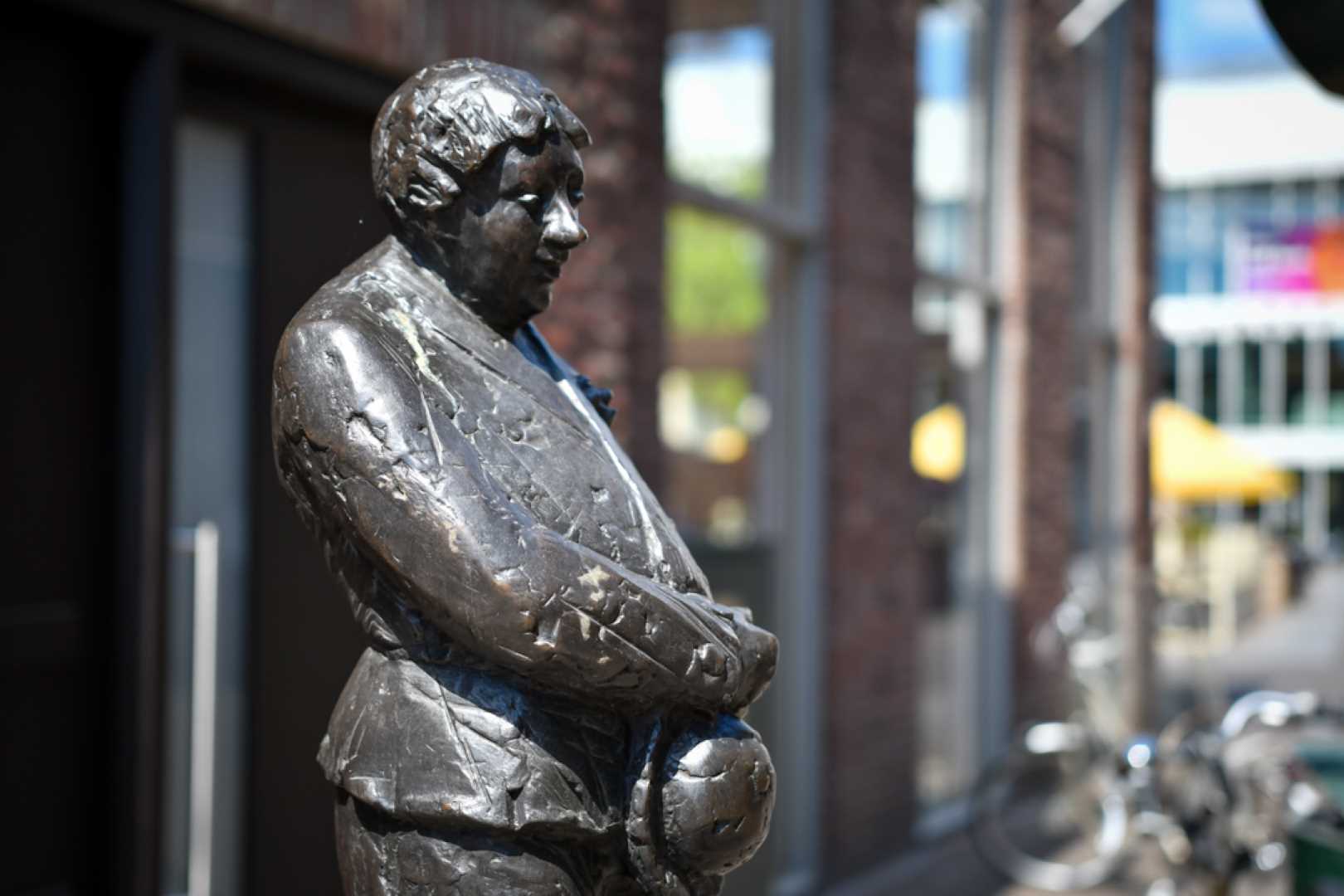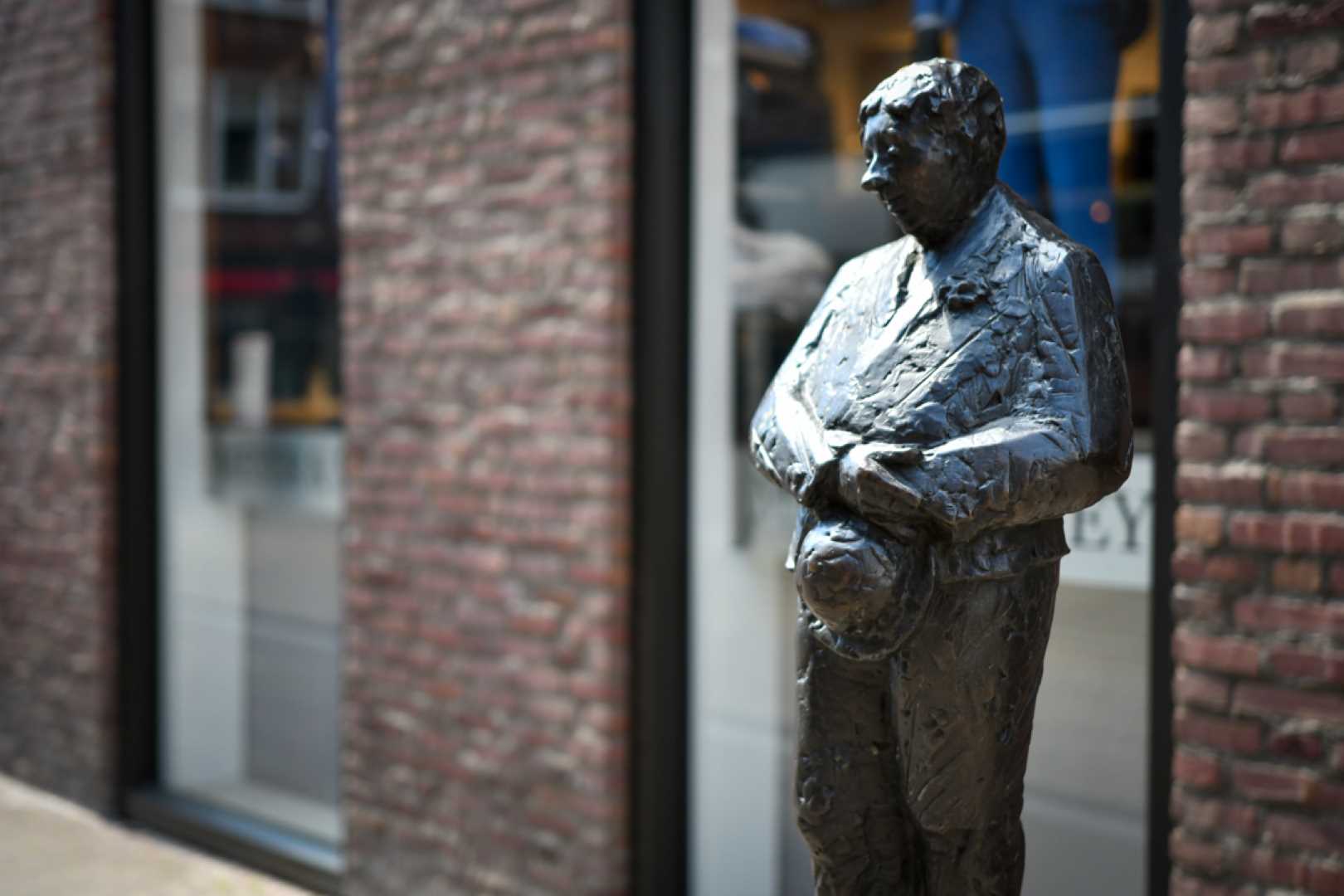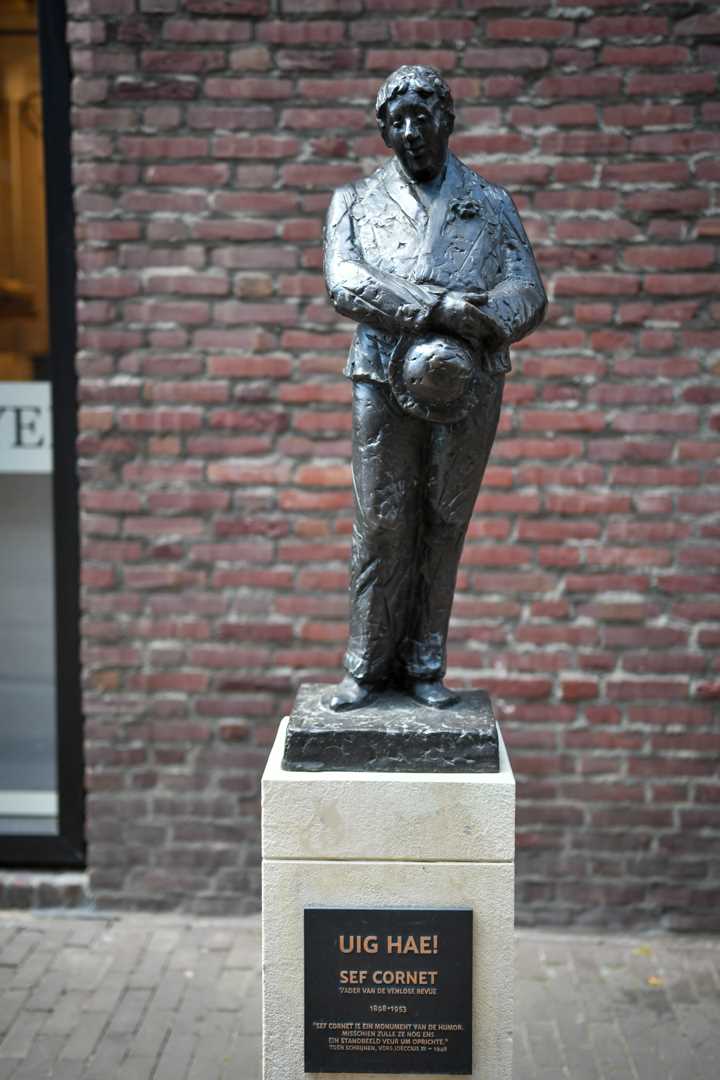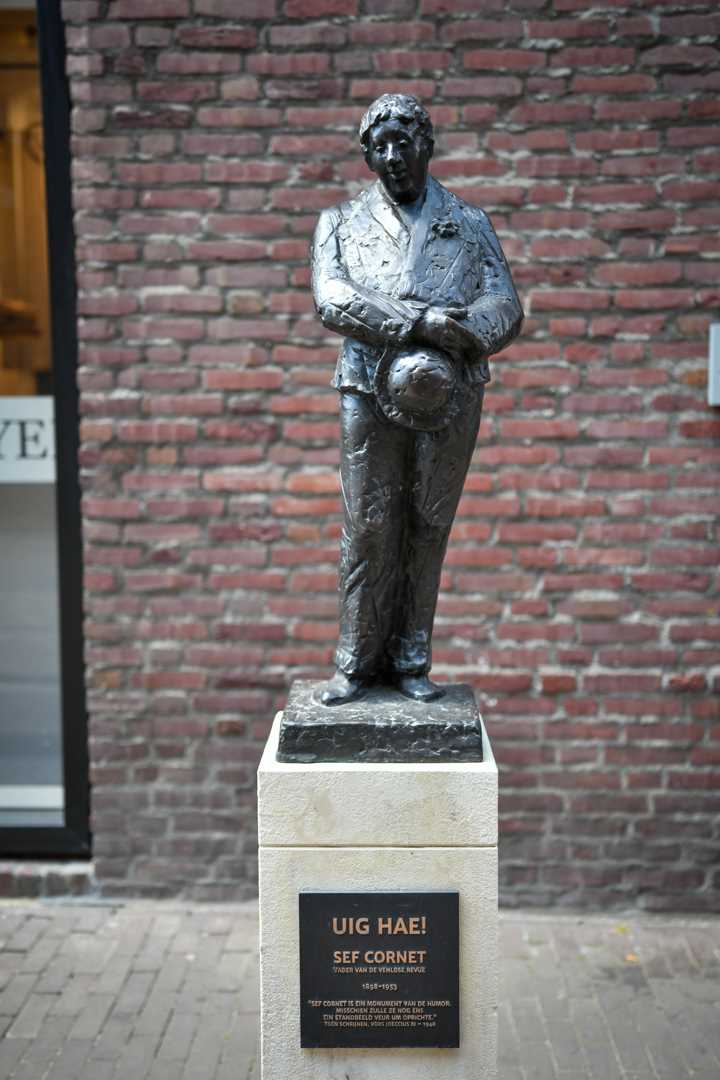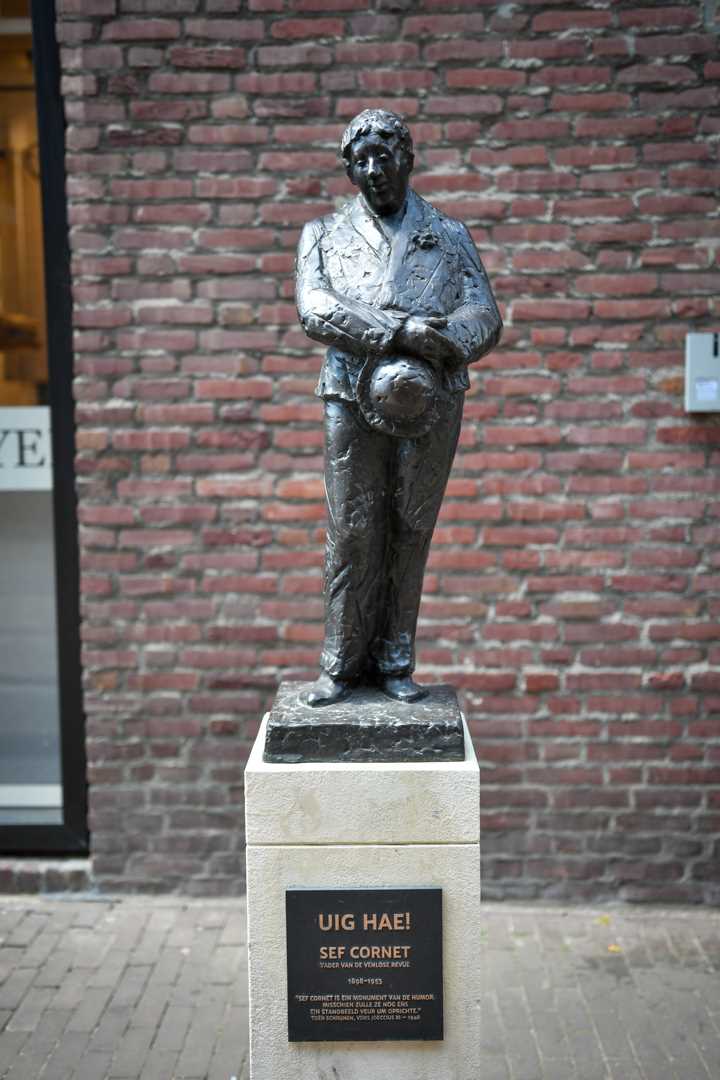Sef Cornet
Statue street Jodenstraat
Sef Cornet – Charles Dumernit
In the Jodenstraat there are several sculptures (an initiative of Stichting Bronzen Beelden Venlo) of well-known city figures from Venlo’s past. Sef Cornet (1898-1953) is one of them, placed on 20 April 2019. Cornet is also called the father or founder of the Theatre show: The Venlose revue, shows in which he himself played the leading role. Together with his brother Mathieu, who composed the songs, he wrote the first Show, which was performed in 1920 by members of the ‘Elf-Elf’ society.
Cornet had a sense of humour that appealed to most people and was never hurtful. His shows were also popular outside Venlo, and he was appointed as an honorary citizen of the city of Cologne. His shows were popular from the very beginning, but flourished especially after the Second World War, when people were in great need of entertainment. In addition to writing these shows, Sef Cornet was a troubadour, he made Limburg programmes for the radio, headed a cabaret company, was a member of the council of eleven of the Venlo carnival society Jocus, and ran various cafés.
After Cornet’s death in 1953, there was a silence in the Venlo Revue world that lasted until 1980. Then, for the occasion of the 125th anniversary of the Royal Music Company Fanfare Venlo, a theatre show in the style of Sef Cornet was performed again; from October 1980 through September 1982, there were 22 performances. The success of this show has led to new theatre shows to this day forward, which can count on great interest each time.
The artist: Charles Dumernit
The statue of Sef Cornet is a good example of the figurative art of sculptor Charles Dumernit (Utrecht, 1948 – Sittard 2019). With simplicity and timelessness, he wants the viewer to look at existence from a different perspective. His main theme, ‘The battle against haste’, fits perfectly within the Motto from Venlo ‘Festina Lente’ which means ‘Hurry but do it slowly’. Jodenstraat is one of the three Festina Lente streets in Venlo, which are characterised by the fact that they are mainly occupied by local, small entrepreneurs (Klaasstraat and Gasthuisstraat are the other two Festina Lente streets).
In this excessively hectic life, take a break, is the message of Dumernit’s figurative sculptures made of various types of stone and bronze. Each of his works seems to want to tell a story, is expressive and made with great attention to detail. Dumernit was honoured with the Prix de Rome.
The Jodenstraat (the Jews’ street)
The Jodenstraat is located in one of the oldest parts of Venlo’s city centre. Traces from Roman times have been found here, dating back to the first century AD. According to the legend about the origins of Venlo, Valuas or Flujas, chieftain of the Bructeren, founded a castle called the Vrijburg near the Jodenstraat and Oude Markt in or around the year 96. The name of the street refers to the presence of Jews, who had already settled in Venlo in the 14th century.
For centuries, there used to be monastery on the corner of Jodenstraat and Heilige Geeststraat.
Unfortunately, you will not find a lot of the old buildings; the area was almost completely destroyed during the bombing raids at the end of 1944, which were intended to destroy Venlo’s city bridge in order to stop the Germans.
Only the Romer House from 1490 was saved and preserved. It is a patrician house built in the late Gothic style. Behind the Romerhuis and the present Jodenstraat (Jews’ Street) and in southern direction around the harbour area, there was a working-class neighbourhood called ‘t Hetje. Nowadays, this would be called a deprived area, with prostitution and much alcohol abuse. Many inhabitants of ‘t Hetje worked in the harbour. The neighbourhood consisted largely of slum dwellings and was therefore cleaned up just before the Second World War. The air raids at the end of 1944 did the rest.
One of the most famous shops in Venlo, Versierhoes van der Veer, is located in the Jodenstraat.
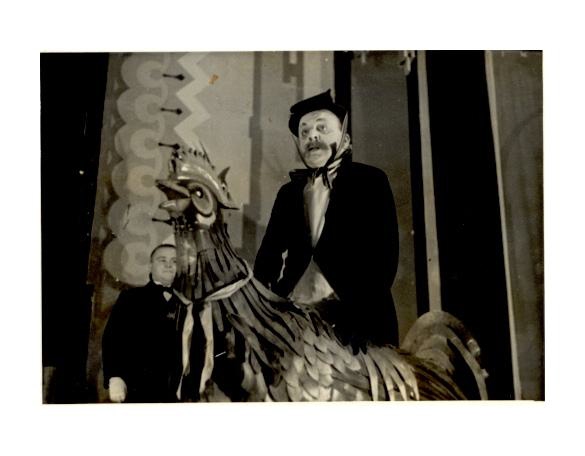
Sef Cornet in d’n Haan at the Jocus carnival association (photo: Venlo municipal archive)
